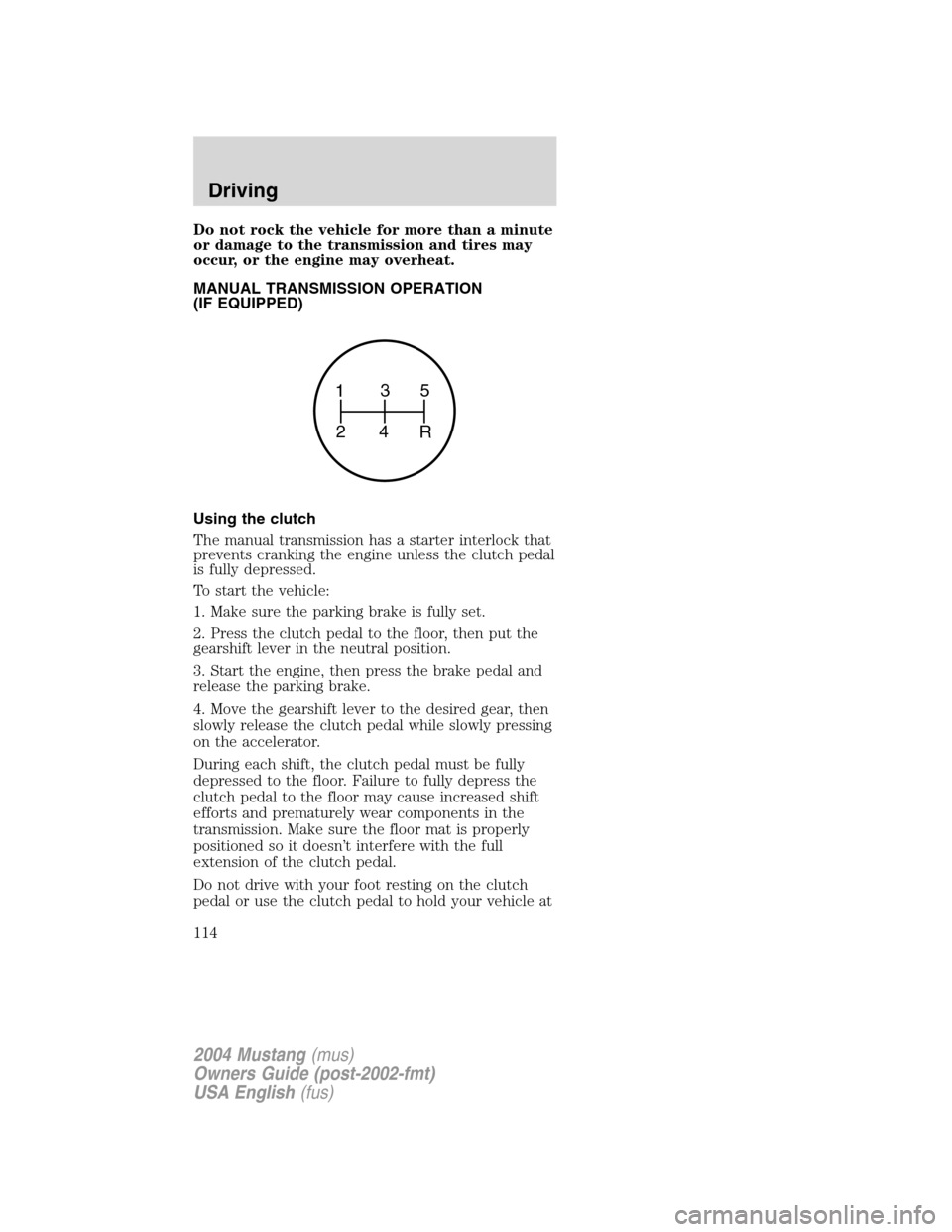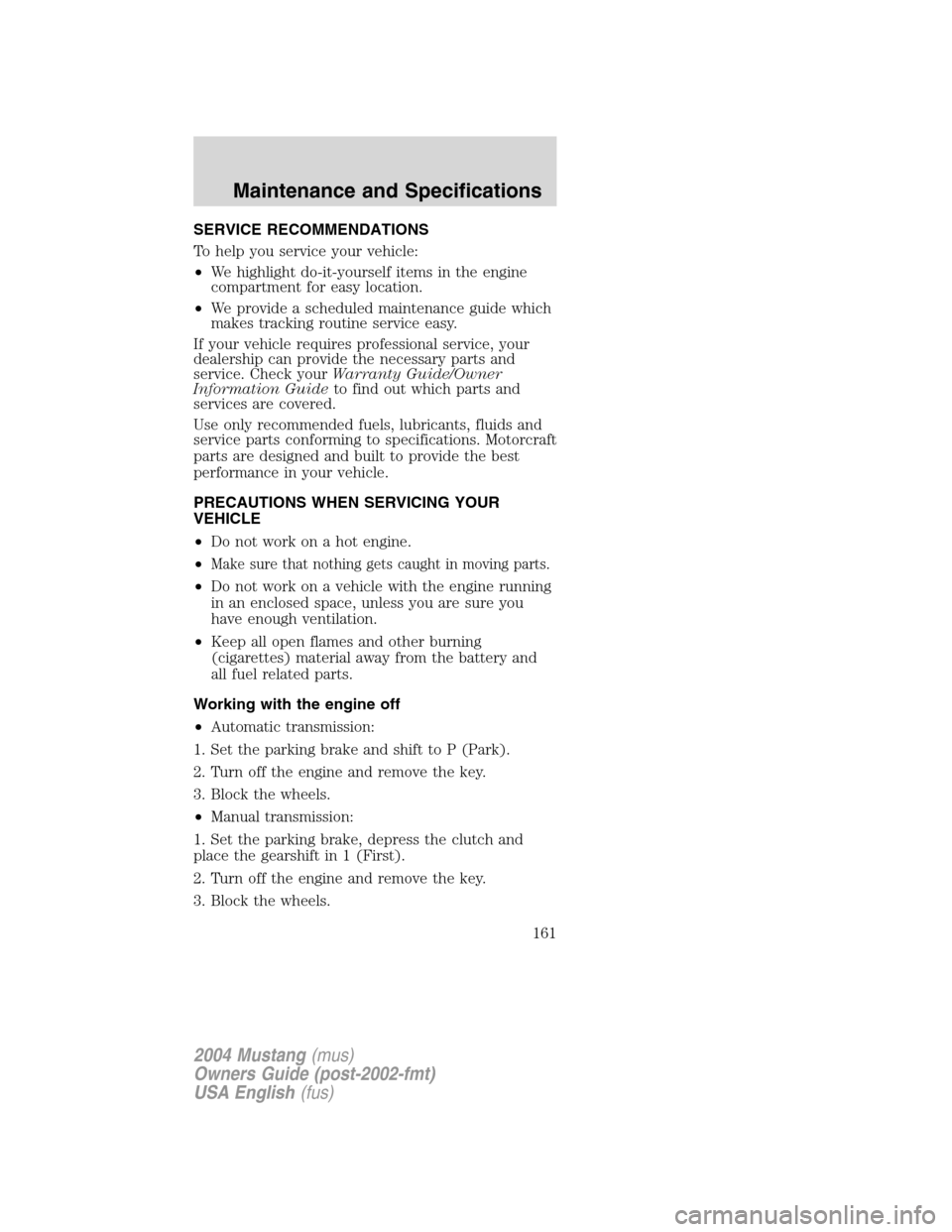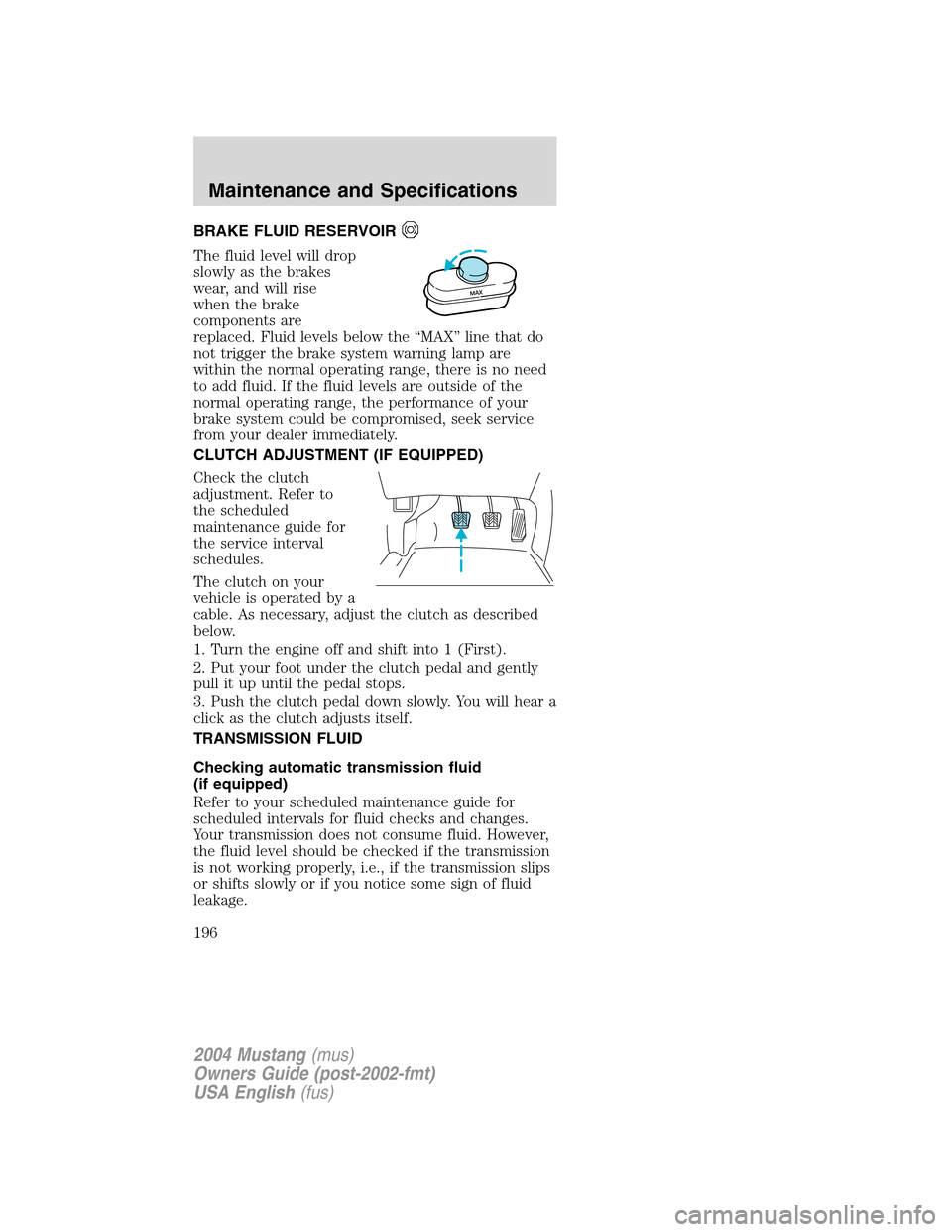Page 49 of 240

•Depress the brake pedal or the clutch pedal (if
equipped). This will not erase your vehicle’s
previously set speed.
•Press the speed
control OFF control.
Note:When you turn
off the speed control or
the ignition, your speed
control set speed
memory is erased.
CENTER CONSOLE
Your vehicle may be equipped with a variety of
console features. These include:
•Dual cupholders
•Auxiliary power point
•Coin holder slots (if equipped)
•Convertible top control (if equipped)
Use only soft cups in the cupholder. Hard
objects can injure you in a collision.
Cell phone use
The use of Mobile Communications Equipment has
become increasingly important in the conduct of
business and personal affairs. However, drivers must
not compromise their own or others’safety when
using such equipment. Mobile Communications can
enhance personal safety and security when
appropriately used, particularly in emergency
situations. Safety must be paramount when using
mobile communications equipment to avoid negating
these benefits.
Mobile Communication Equipment includes, but is
not limited to cellular phones, pagers, portable email
devices, in vehicle communications systems,
telematics devices and portable two-way radios.
OFF ON
2004 Mustang(mus)
Owners Guide (post-2002-fmt)
USA English(fus)
Driver Controls
49
Page 101 of 240
Before starting the vehicle:
1. Make sure all occupants buckle their safety belts.
For more information on safety belts and their
proper usage, refer to theSeating and Safety
Restraintschapter.
2. Make sure the headlamps and electrical
accessories are off.
If starting a vehicle with an automatic transmission:
•Make sure the
parking brake is set.
•Make sure the
gearshift is in P
(Park).
If starting a vehicle
with a manual
transmission:
1. Make sure the
parking brake is set.
2. Push the clutch
pedal to the floor.
2004 Mustang(mus)
Owners Guide (post-2002-fmt)
USA English(fus)
Driving
101
Page 114 of 240

Do not rock the vehicle for more than a minute
or damage to the transmission and tires may
occur, or the engine may overheat.
MANUAL TRANSMISSION OPERATION
(IF EQUIPPED)
Using the clutch
The manual transmission has a starter interlock that
prevents cranking the engine unless the clutch pedal
is fully depressed.
To start the vehicle:
1. Make sure the parking brake is fully set.
2. Press the clutch pedal to the floor, then put the
gearshift lever in the neutral position.
3. Start the engine, then press the brake pedal and
release the parking brake.
4. Move the gearshift lever to the desired gear, then
slowly release the clutch pedal while slowly pressing
on the accelerator.
During each shift, the clutch pedal must be fully
depressed to the floor. Failure to fully depress the
clutch pedal to the floor may cause increased shift
efforts and prematurely wear components in the
transmission. Make sure the floor mat is properly
positioned so it doesn’t interfere with the full
extension of the clutch pedal.
Do not drive with your foot resting on the clutch
pedal or use the clutch pedal to hold your vehicle at
135
24
R
2004 Mustang(mus)
Owners Guide (post-2002-fmt)
USA English(fus)
Driving
114
Page 115 of 240

a standstill while waiting on a hill. These actions will
reduce the life of the clutch.
Recommended shift speeds
Do not downshift into 1 (First) when your
vehicle is moving faster than 24 km/h (15 mph).
This will damage the clutch.
Upshift according to the following chart:
Upshifts when accelerating (recommended for best
fuel economy)
Shift from:
1 - 2 18 km/h (11 mph)
2 - 3 31 km/h (19 mph)
3 - 4 48 km/h (30 mph)
4 - 5 64 km/h (40 mph)
Reverse
1. Make sure that your vehicle is at a complete stop
before you shift into R (Reverse). Failure to do so
may damage the transmission.
2. Move the gearshift lever into the neutral position
and wait at least three seconds before shifting into R
(Reverse).
•The gearshift lever can only be moved into R
(Reverse) by moving it from left of 3 (Third) and
4 (Fourth) before shifting into R (Reverse). This
is a lockout feature that protects the transmission
from accidentally being shifted into R (Reverse)
from 5 (Overdrive).
Parking your vehicle
1. Apply the brake and shift into the neutral
position.
2. Fully apply the parking brake, then shift into 1
(First).
3. Turn the ignition off.
2004 Mustang(mus)
Owners Guide (post-2002-fmt)
USA English(fus)
Driving
115
Page 127 of 240
Fuse/Relay
LocationFuse Amp
RatingPassenger Compartment
Fuse Panel Description
11 15A Back-up lamps
12 2A Heated PCV
13 15A Electronic flasher
14—Not used
15 15A Power lumbar
16—Not used
17 15A Speed control servo, Shift
lock actuator
18 15A Electronic flasher
19 15A Power mirror switch, GEM,
Anti-theft relay, Power door
locks, Door ajar switches
20 15A Convertible top switch
21 5A Instrument cluster and
engine control memory
22—Not used
23 15A A/C clutch, Defogger switch
24 30A Climate control blower
motor
25 25A Luggage compartment lid
release
26 30A Wiper/Washer motor, Wiper
relays
27 20A Radio
28 15A GEM, Overdrive cancel
switch
29 15A Anti-lock Brake System
(ABS) module
30 15A Daytime Running Lamps
(DRL) module
31 10A Data link connector
32 15A Radio, GEM
33 15A Stop lamp switch, Speed
control deactivation switch
2004 Mustang(mus)
Owners Guide (post-2002-fmt)
USA English(fus)
Roadside Emergencies
127
Page 161 of 240

SERVICE RECOMMENDATIONS
To help you service your vehicle:
•We highlight do-it-yourself items in the engine
compartment for easy location.
•We provide a scheduled maintenance guide which
makes tracking routine service easy.
If your vehicle requires professional service, your
dealership can provide the necessary parts and
service. Check yourWarranty Guide/Owner
Information Guideto find out which parts and
services are covered.
Use only recommended fuels, lubricants, fluids and
service parts conforming to specifications. Motorcraft
parts are designed and built to provide the best
performance in your vehicle.
PRECAUTIONS WHEN SERVICING YOUR
VEHICLE
•Do not work on a hot engine.
•
Make sure that nothing gets caught in moving parts.
•Do not work on a vehicle with the engine running
in an enclosed space, unless you are sure you
have enough ventilation.
•Keep all open flames and other burning
(cigarettes) material away from the battery and
all fuel related parts.
Working with the engine off
•Automatic transmission:
1. Set the parking brake and shift to P (Park).
2. Turn off the engine and remove the key.
3. Block the wheels.
•Manual transmission:
1. Set the parking brake, depress the clutch and
place the gearshift in 1 (First).
2. Turn off the engine and remove the key.
3. Block the wheels.
2004 Mustang(mus)
Owners Guide (post-2002-fmt)
USA English(fus)
Maintenance and Specifications
161
Page 162 of 240
Working with the engine on
•Automatic transmission:
1. Set the parking brake and shift to P (Park).
2. Block the wheels.
•Manual transmission:
1. Set the parking brake, depress the clutch and
place the gearshift in N (Neutral).
2. Block the wheels.
Note:Do not start your engine with the air cleaner
removed and do not remove it while the engine is
running.
OPENING THE HOOD
1. Inside the vehicle,
pull the hood release
handle located under
the bottom left corner
of the instrument
panel.
2. Go to the front of the vehicle and release the
auxiliary latch that is located under the front center
of the hood.
HOOD
2004 Mustang(mus)
Owners Guide (post-2002-fmt)
USA English(fus)
Maintenance and Specifications
162
Page 196 of 240

BRAKE FLUID RESERVOIR
The fluid level will drop
slowly as the brakes
wear, and will rise
when the brake
components are
replaced. Fluid levels below the“MAX”line that do
not trigger the brake system warning lamp are
within the normal operating range, there is no need
to add fluid. If the fluid levels are outside of the
normal operating range, the performance of your
brake system could be compromised, seek service
from your dealer immediately.
CLUTCH ADJUSTMENT (IF EQUIPPED)
Check the clutch
adjustment. Refer to
the scheduled
maintenance guide for
the service interval
schedules.
The clutch on your
vehicle is operated by a
cable. As necessary, adjust the clutch as described
below.
1. Turn the engine off and shift into 1 (First).
2. Put your foot under the clutch pedal and gently
pull it up until the pedal stops.
3. Push the clutch pedal down slowly. You will hear a
click as the clutch adjusts itself.
TRANSMISSION FLUID
Checking automatic transmission fluid
(if equipped)
Refer to your scheduled maintenance guide for
scheduled intervals for fluid checks and changes.
Your transmission does not consume fluid. However,
the fluid level should be checked if the transmission
is not working properly, i.e., if the transmission slips
or shifts slowly or if you notice some sign of fluid
leakage.
M
A
X
2004 Mustang(mus)
Owners Guide (post-2002-fmt)
USA English(fus)
Maintenance and Specifications
196